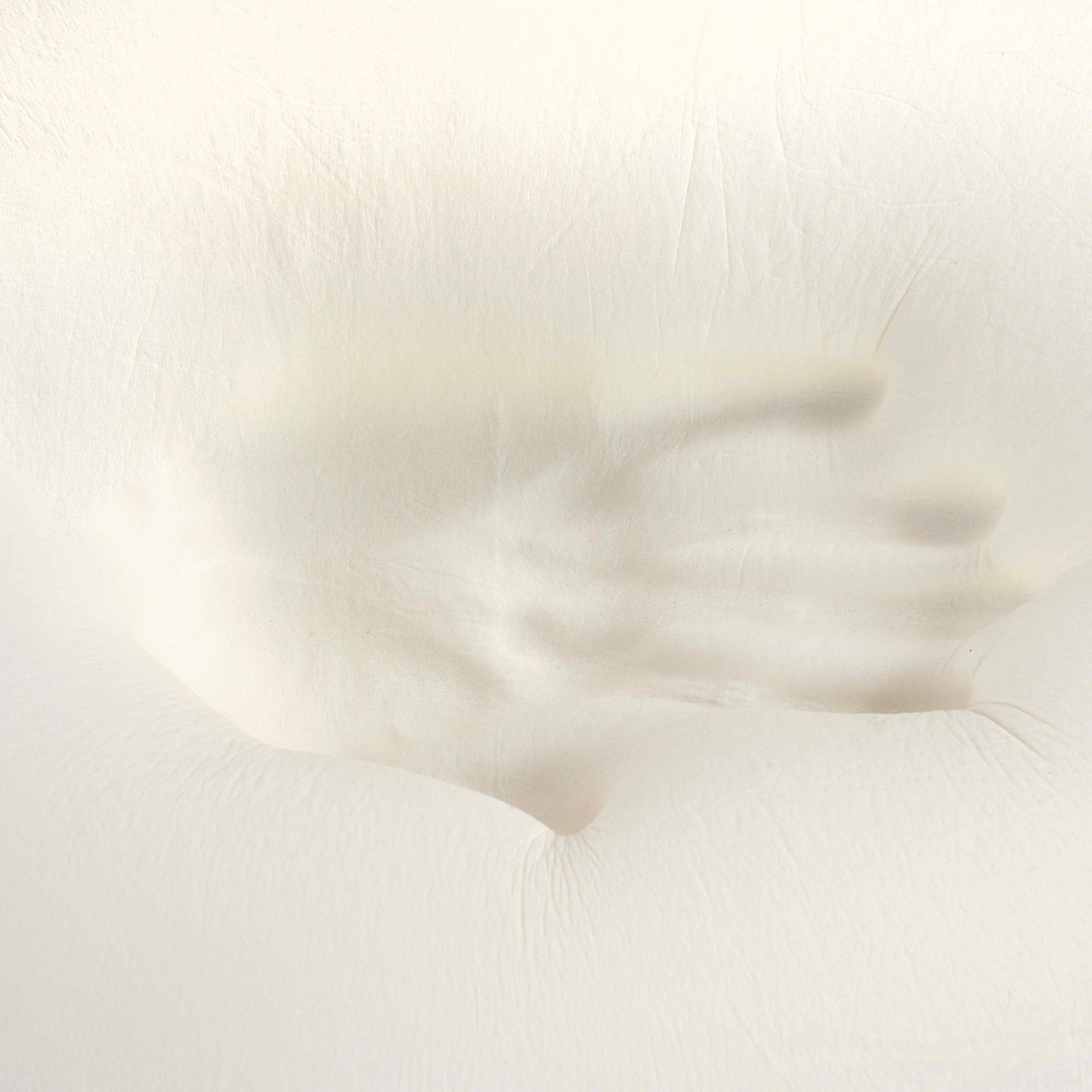Memory Foam

Memory foam reacts to heat and pressure, adapts precisely to the body, and relieves pressure on joints and the spine. It offers a high level of comfort and is ideal for mattresses and pillows. However, it is based on fossil raw materials and is not biodegradable.
What is memory foam?
Memory foam – also known as viscoelastic foam – is a temperature- and pressure-sensitive material that conforms very precisely to the body. Originally developed by NASA for pressure relief, memory foam is now mainly used in mattresses, pillows, and upholstered furniture.
Its defining feature is its slow recovery: after compression, a temporary indentation remains before the foam slowly returns to its original shape. This creates the characteristic "sinking in" feeling of memory foam, which reduces pressure points and relieves the spine.
Memory foam responds to body heat: the warmer it is, the softer it becomes – at cooler temperatures, it remains firmer. This property enables an individually adapted pressure distribution, making it particularly appealing for people with orthopedic needs.
How is memory foam made?
Like cold foam, memory foam is based on polyurethane, but special additives are added to make it viscoelastic. These additives modify the cell structure so that the foam reacts thermoplastically – i.e., it responds slowly and evenly to heat and pressure.
The raw materials – polyols, isocyanates, water, and additives – are mixed and foamed under controlled conditions. This creates an open-cell structure that is essential for breathability and pressure relief.
After curing in large blocks, the foam is cut and layered with other materials – such as supportive cold foam or natural latex.
Environmental impact of memory foam
Like cold foam, memory foam is based on fossil resources. Initial approaches exist to blend or fully substitute it with bio-based polyols, but they have not yet reached the quality level of synthetic memory foam on the market.
1. Origin of raw materials
Like cold foam, memory foam is based on fossil resources. Initial approaches to using bio-based polyols exist, but the current share remains in the single-digit percentage range.
2. Energy consumption during production
Producing memory foam requires more energy than simple cold foam due to additional processing steps and additives. Some manufacturers attempt to reduce the carbon footprint by using green electricity or more energy-efficient processes.

3. Durability
Memory foam is durable but tends to lose its recovery ability faster than cold foam under heavy use. High-quality variants can maintain their performance for 7–10 years.
4. Recycling & disposal
Material recycling is currently limited – memory foam is usually thermally recycled. However, pilot projects for recovering foam from old mattresses are gaining importance. Used memory foam can now be shredded and reused, similar to cold foam.
5. Biodegradability
Memory foam is not biodegradable. As with other foams, thermal, mechanical, or chemical recycling methods are the common end-of-life options.
Technical properties of memory foam
| Property | Value |
|---|---|
| Density | 40 – 60 kg/m³ |
| Compression hardness | 1.5 – 3.5 kPa |
| Recovery | Slow |
| Air permeability | Medium (fine-pored) |
| Temperature response | Heat-sensitive (softer with body warmth) |
| Lifespan | 6 – 10 years |
| Hygiene characteristics | Low mite retention, dimensionally stable, odorless |
| Recyclability | Limited |
| Applications | Mattresses, pillows, seat cushions, toppers |
Memory foam at ekomia
So far, memory foam plays only a minor role at ekomia, as we prefer natural materials. We use Oeko-Tex 100 certified memory foam for a mattress topper due to its good properties.
We are closely monitoring developments in recycled viscoelastic foams and continuously evaluating alternatives with better sustainability profiles.

Do you still have any questions?
Do you have any questions or comments on this topic? Write a comment, we will be happy to answer.
